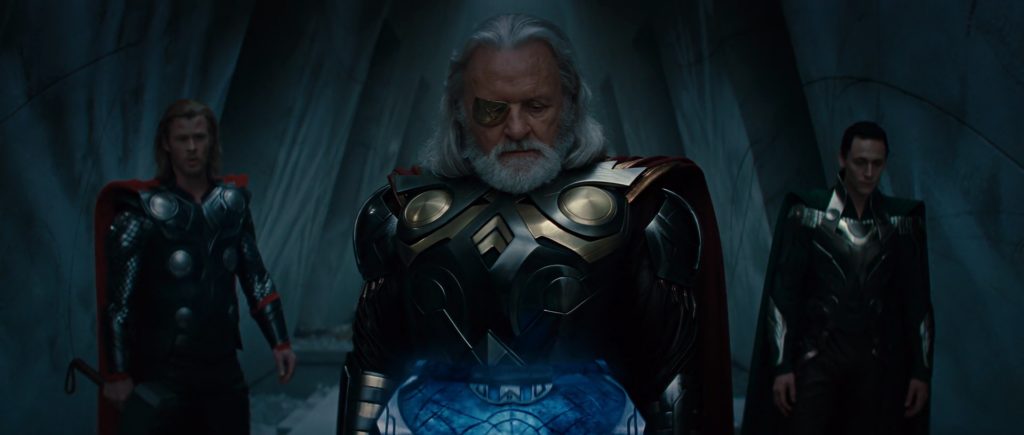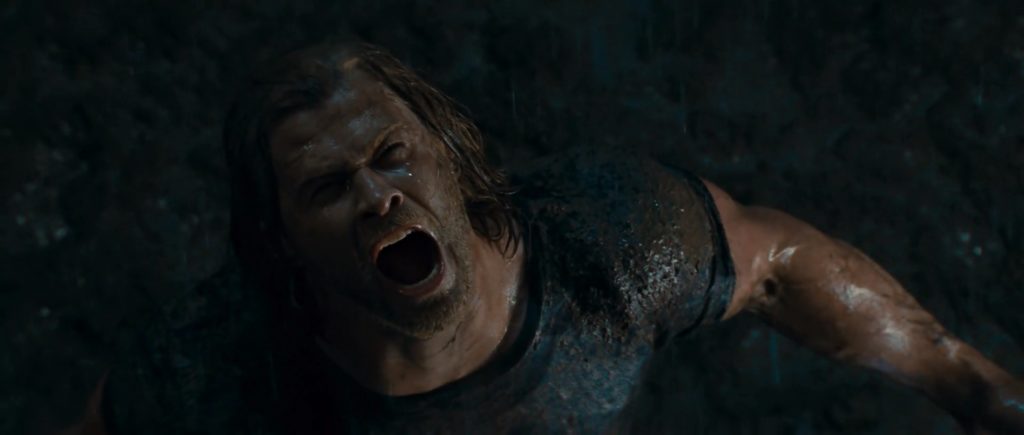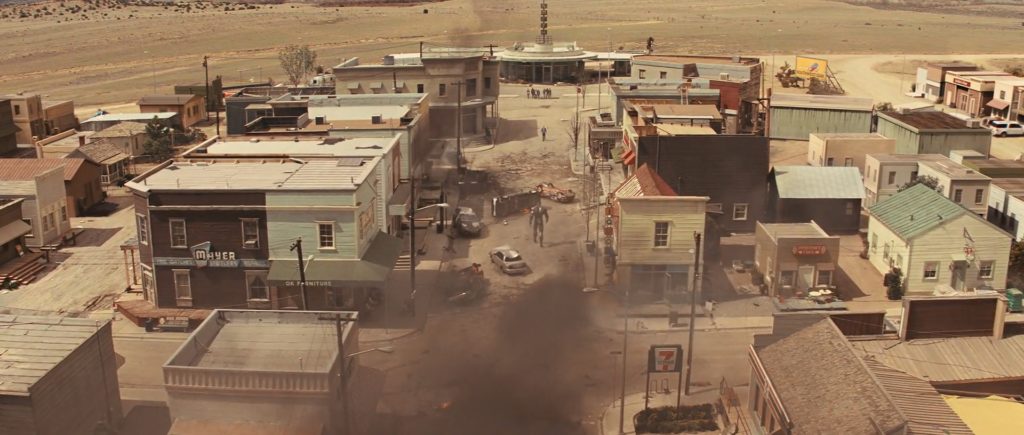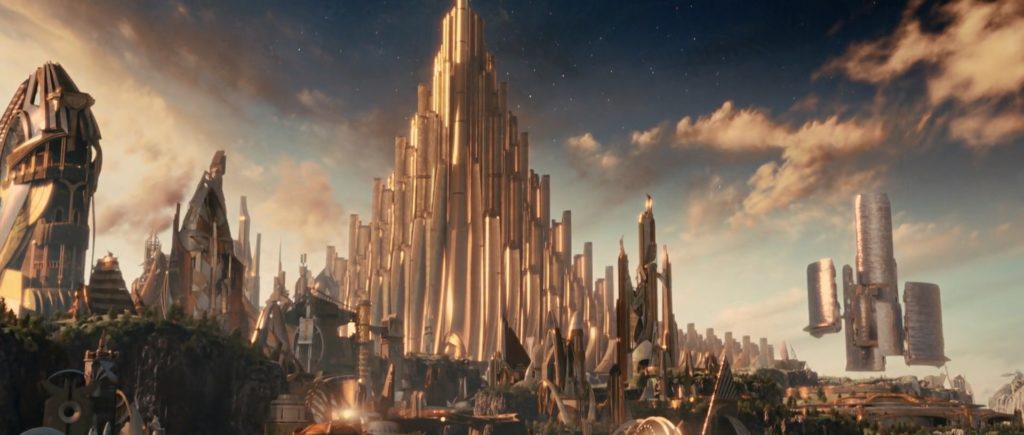In this weekly series, we chronicle the long road undertaken by the Marvel Cinematic Universe movies to arrive at Avengers: Infinity War. We introspect and discuss the movies from a critical and commercial standpoint while also considering the development efforts that went behind them. These articles may be occasionally sprinkled with spoilers so please make sure to skip the relevant sections when reading.
This post is about the 2011 movie Thor, the fourth chapter in the Marvel Cinematic Universe.
If there’s one thing Marvel Studios is revered for, its sticking to the roots of its comic book characters. Whether deftly remarkable or downright silly, Marvel generally isn’t the one to eschew its history in favor of presenting a more realistic picture to its audience. Time and again, the Marvel method has relied on taking what works best from different origin stories about its characters and weaving them into a movie that works and blends within its cinematic universe.
Having said that, Marvel has also not shied away from introducing new elements to its universe every now and then or upgrading a few elements from the source stories for the sake of a grounded narrative. So while The Incredible Hulk and Iron Man 2 can be regarded as safe-plays for the studio, it was time for Marvel to introduce the more cosmic elements of its universe. That, and the Greek God’s role in the Marvel team up meant the next movie on Marvel’s line up would deal with The Mighty Thor.
Created by the hands of Stan Lee and Jack Kirby, Thor introduced readers and viewers to Asgard, the God’s home world. Within the world of Marvel however, Thor and his fellow comrades are also advanced beings, their science leaps and bounds ahead compared to the science of earth to the extent that it feels like magic. The Gods have a bridge at their disposal, Bifrost, guarded by the all-seeing Heimdall which allows them to travel to other realms. Among the most powerful of Asgardians is Odin, King of Asgard, who is largely responsible for maintaining peace amongst a majority of the nine realms, including brokering a truce between the two warring realms of Asgard and Jotunheim.
Odin with his wife Frigga are the parents to two sons, Thor and Loki. At the start of the movie, the former is a bratty, often arrogant boyish lad, always eager to jump into a battlefield (tangentially reminiscent of Emil Blonsky). He’s over-confident at times, with a strong ego and a lack of respect, a brashness oozing out of his personality. The other son of Odin is comparably quiet and meek figured with a sly hint of mischievousness in him which he often uses to entice his brother and others into doing things that get him the outcome he wants. This results in some excellent moments between the two brothers which set the plot in motion.
 With Thor set to be coronated the new King of Asgard, Frost Giants from Jotunheim break through Asgard’s defenses, attempting to steal the Casket of Winters, an ancient relic that gives their leader his much needed power which was rightly suspended by Odin. While Odin refuses to invade the home of the Frost Giants in retaliation for fear of breaking their fragile piece, Loki incites Thor to do just that. Thor unwittingly falls for it and enlists the help of his colleagues Lady Sif and the Warriors Three to invade Jotunheim, an invasion that is stopped from turning into a full-fledged war by the timely appearance of Odin. Frustrated by his son’s lack of maturity, he takes away his hammer and exiles him to Earth.
With Thor set to be coronated the new King of Asgard, Frost Giants from Jotunheim break through Asgard’s defenses, attempting to steal the Casket of Winters, an ancient relic that gives their leader his much needed power which was rightly suspended by Odin. While Odin refuses to invade the home of the Frost Giants in retaliation for fear of breaking their fragile piece, Loki incites Thor to do just that. Thor unwittingly falls for it and enlists the help of his colleagues Lady Sif and the Warriors Three to invade Jotunheim, an invasion that is stopped from turning into a full-fledged war by the timely appearance of Odin. Frustrated by his son’s lack of maturity, he takes away his hammer and exiles him to Earth.
The rest of the plot takes place largely on Earth with Thor being discovered by scientists Erik Selvig, Jane Foster and her intern Darcy. They take him in to understand his origins and connection to the other worlds. Thor too starts getting along with humans and learning the ways of the earth folk, including modesty, humility and, as the circumstances proceed, sacrifice. Meanwhile, snippets of Asgard reveal the truth behind Loki’s parentage and his forcefully taking the King’s Throne for himself.
Much like Iron Man, Thor underwent a period of development hell. The project was initially supposed to be taken up by Sam Raimi after his 1990 movie Darkman but things fell apart and it lingered on ever since. Only when the rights were snapped back by Marvel Studios did they decide to produce it themselves which finally set things in motion. Hiring Kenneth Branagh for directorial duties came as a result of his background in Shakespeare, which he much refreshingly brought to the table. It only helped that actors Anthony Hopkins and Colm Feore who played Odin and Laufey respectively had a similar background; the trio would discuss their scenes in the context of Shakespeare to better understand what their characters were going through.
 Choosing Thor was an equally tough and critical task for Marvel. After having initially rejected the then 25-year old Chris Hemsworth after Marvel Producer Kevin Feige didn’t like his first reading, he was called back again and gradually grew on the studio as the top contender for the role. In a rather strange twist of fate, he would end up contending with his own brother Liam Hemsworth for the role. Tom Hiddleston was also a contender but seeing his slender physique and demeanor, director Kenneth Branagh felt he would be better suited as the God of trickery Loki. What a fine decision that would turn out to be.
Choosing Thor was an equally tough and critical task for Marvel. After having initially rejected the then 25-year old Chris Hemsworth after Marvel Producer Kevin Feige didn’t like his first reading, he was called back again and gradually grew on the studio as the top contender for the role. In a rather strange twist of fate, he would end up contending with his own brother Liam Hemsworth for the role. Tom Hiddleston was also a contender but seeing his slender physique and demeanor, director Kenneth Branagh felt he would be better suited as the God of trickery Loki. What a fine decision that would turn out to be.
At its heart, Thor is a very simple tale of good v/s evil or more appropriately, good-intent was mal-intent. Thor himself represents the former and undergoes an archetypal journey from bad boyish brat to brave noble soul, proving himself worthy with an act of sacrifice. At the other end is Loki who represents malicious behavior on the surface even though he has very strong motivations behind his actions and feelings. The truth about his adopted parentage makes him question Odin’s loyalties and drives him in a mad frenzy where his focus shifts towards attaining power, something that plays off well in his next appearance in the MCU as well. The simplicity with which the movie plays out often reminds one of a fairy tale. Kudos to director Kenneth Branagh and the writing team for introducing heavy-handed concepts in a simple and easy to absorb way; not once do you feel overwhelmed by anything thrown at you.
It’s also interesting how, in stark contrast to the movies that would follow, Thor keeps the conflict restricted to a very small scale. In that sense, it is spiritually similar to Marvel’s other origin movie Iron Man. Rarely is the world at danger here and most of the earth set pieces are restricted to a small town New Mexico; this allowed the film crew to focus on this one giant set in excruciating detail and they ended up revamping a deserted town and made it come alive for the shoot, replete with signboards, street signs, shops and all other small details. The Asgardian stuff also has some epic pieces and some of the sets there (yes there are sets) are truly magnificent. Of particular note are the coronation ceremony and Heimdall’s lair which transports people through the Bifrost. Whether its the Bifrost itself or the Hammer or the costumes, the designs truly stand out.

Chris Hemsworth gives a competent performance as The Mighty Thor, portraying excellently the anger, and aggressiveness of the character which later on transforms into a feeling of repent. Even so, he’s largely overshadowed by the excellently talented supporting cast which the movie has assembled. Tom Hiddleston plays the devious Loki sympathetically, allowing us to understand his side of the story rather than making a mindless power-hungry God. He would’ve almost stolen the show were it not for Anthony Hopkins’s excellent but sadly limited portrayal as Odin. As Odin, Hopkins brings a poignant gravitas and groundedness to the otherwise difficult role, portraying the anguish of losing a son to recklessness with finesse. He also adds the much needed Shakespearean touch to the role which makes him sound and look royal in every frame he’s in. Watch his reaction to Thor admonishing him and calling him out for not charging on the Frost Giants, he breaks down in a heart-wrenching display of emotions while being careful to avoid going overboard. In fact, he improvised his reaction to Thor’s display of anger, something which left most of the cast there unable to hold back their tears. Colm Feore as Odin’s rival Laufey is every bit as maleficent as he is supposed to be, although he adds in a shade or two of poignancy and regret that make him stand out.
The movie’s visuals are a mixed bag. While they supplement the rest of the movie nicely by conveying a sense of grandeur and scale, they often feel a tad too cartoonish. This is especially prominent in the Asgard pan sequences which depict the vastness and sheer scope of the world. Since the wide shots are all done in CG, it looks a bit fake on several occasions. Even so, the movie has some breathtaking shots and fantastic sequences such as the fight on Jotunheim or the climax on Asgard that convey and otherworldly sense of scale. The music soars to life at several moments in the movie. I particularly love Thor’s theme in the movie and despite the generic direction Marvel music would undertake in the future movies, the soundtrack of Thor is pretty competent and recognizable in itself.
 Despite it’s low financial gross when compared to Iron Man, or even a lot of other movies that would follow, Thor was widely considered a financial success, grossing nearly $450 million. It was a pretty good reception for a studio that out of nowhere had started making waves and slowly building up towards its most pivotal vehicle. Now there was one movie left before uniting all the heroes. And the post-credits scenes were a time to set this up which is precisely what Marvel did with Thor when it had Nick Fury cameo towards the end explaining the powers of a certain blue cube to Erik Selvig. It was now time to find out where this mysterious blue cube came from. It was now time to introduce the final piece of the puzzle.
Despite it’s low financial gross when compared to Iron Man, or even a lot of other movies that would follow, Thor was widely considered a financial success, grossing nearly $450 million. It was a pretty good reception for a studio that out of nowhere had started making waves and slowly building up towards its most pivotal vehicle. Now there was one movie left before uniting all the heroes. And the post-credits scenes were a time to set this up which is precisely what Marvel did with Thor when it had Nick Fury cameo towards the end explaining the powers of a certain blue cube to Erik Selvig. It was now time to find out where this mysterious blue cube came from. It was now time to introduce the final piece of the puzzle.
It was time for us to meet The First Avenger.





